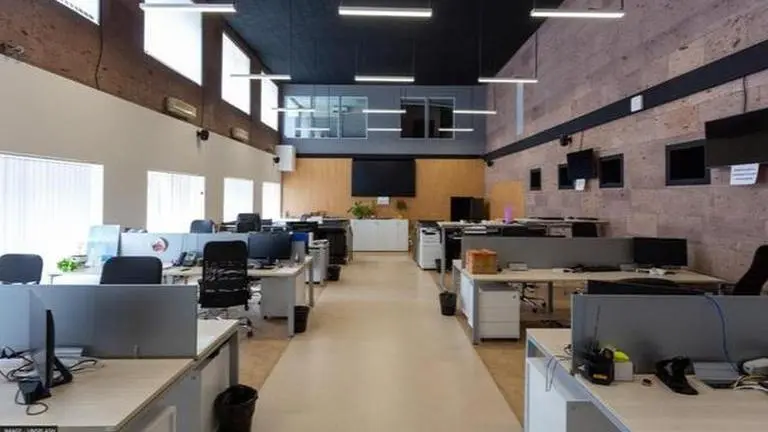Updated 21 March 2023 at 13:57 IST
Indian office sector might lease 35-38 mn square feet: Colliers
In an optimistic scenario, India’s office sector is likely to see about 35-38 mn sq ft of gross leasing in 2023.
- Republic Business
- 4 min read

In the ideal scenario, India's office market is predicted to have 35–38 million square feet of the gross lease in 2023. In this scenario, it is anticipated that the economic challenges would abate by Q2 2022 and have little impact on occupiers' overall confidence. As a result, bigger occupiers will finalise temporary lease choices, which will result in a major rise in space take-up. On the other hand, a pessimistic scenario would see economic headwinds last longer and postpone a demand rebound. Colliers projects that 2023 leasing will total around 30-33 million square feet at a gross level. According to the analysis, despite current indications of uncertainty in the office market for 2023 and other external factors, it may easily recover. The second half of the year is expected to see an increase in leasing activity, driven by global capability centres, BFSI businesses, and start-ups with strong business models.
The latest report by Colliers, in collaboration with FICCI, highlights how, hybrid working is likely to optimize space utilization and will continue to influence physical work infrastructure and how we work. Further, flex spaces will continue to be a major focal point for landlords and occupiers.
“The growth in traditional and flex spaces has been robust in 2022 as occupiers were more upbeat about leasing space and expanding their footprint. In 2023, despite the office market being riddled with uncertainty, the office sector is poised for growth, provided the economic environment remains bright. We do not expect the leasing numbers to fall below the peak pandemic levels of leasing even in a pessimistic scenario. The key fundamentals of office market will follow the trajectory of demand and supply to maintain a balance in the market,” said Peush Jain, Managing Director, Office Services at Colliers India.
Hybrid working is optimising office space utilisation
Led by various employee-centric and operational benefits, occupiers are embracing hybrid working model. According to a Colliers poll of occupiers on hybrid working in September 2022, 63% of occupiers are adopting the concept, and this number is only likely to rise. Following the pandemic, office space use is shifting as occupants put more of an emphasis on de-densifying areas. People are moving towards hybrid work, making offices more efficient, and improving their ability to facilitate cooperation. Due to employee preferences for working from places closer to their homes, occupiers are also considering dividing office spaces across company centres.
Advertisement
Amidst fast-shifting market dynamics, flex spaces to remain upbeat
Flex spaces, which are a "one-stop solution" for occupiers, are being used by offices to seamlessly integrate hybrid modes of working as they have grown more robust. Flex operators in India leased 7 million square feet of Grade A office space in 2022, a rise of more than three times the previous levels. Although the tech industry is still in flux, occupiers are nevertheless inclined to lease flexible spaces because of the flexible leasing arrangements and short lease periods provided by flex players, which reduces their capital outlay.
How will the office sector perform during 2023?
Due to continuous layoffs brought on by reduced external demand, a significant reduction in overall traction, notably from the IT industry, is anticipated in 2023. Nonetheless, businesses in the BFSI sector, engineering, and leasing via flex are anticipated to be robust. It will take time to determine if the office market can overcome recessionary fears and establish itself in the second half of 2023 or if the economic downturn will have a lasting effect. The market, however, is resilient enough to recover, just as it did during the epidemic.
Advertisement
"Hybrid working has fundamentally altered the nature of work in the future. Occupiers are expected to shift their focus towards adopting a hybrid strategy to satisfy employees' evolving requirements. Businesses would profit from the best possible space use. In order to move workplaces closer to employees' homes, occupiers are also likely to divide their huge offices into satellite offices. Flex space demand is probably going to increase as a result. Hybrid working is expected to change important office foundations in the next years, and it will be especially important for the expansion of flexible spaces, according to Vimal Nadar, Senior Director and Head of Research at Colliers India.
Published By : Pranay Lad
Published On: 21 March 2023 at 12:54 IST
